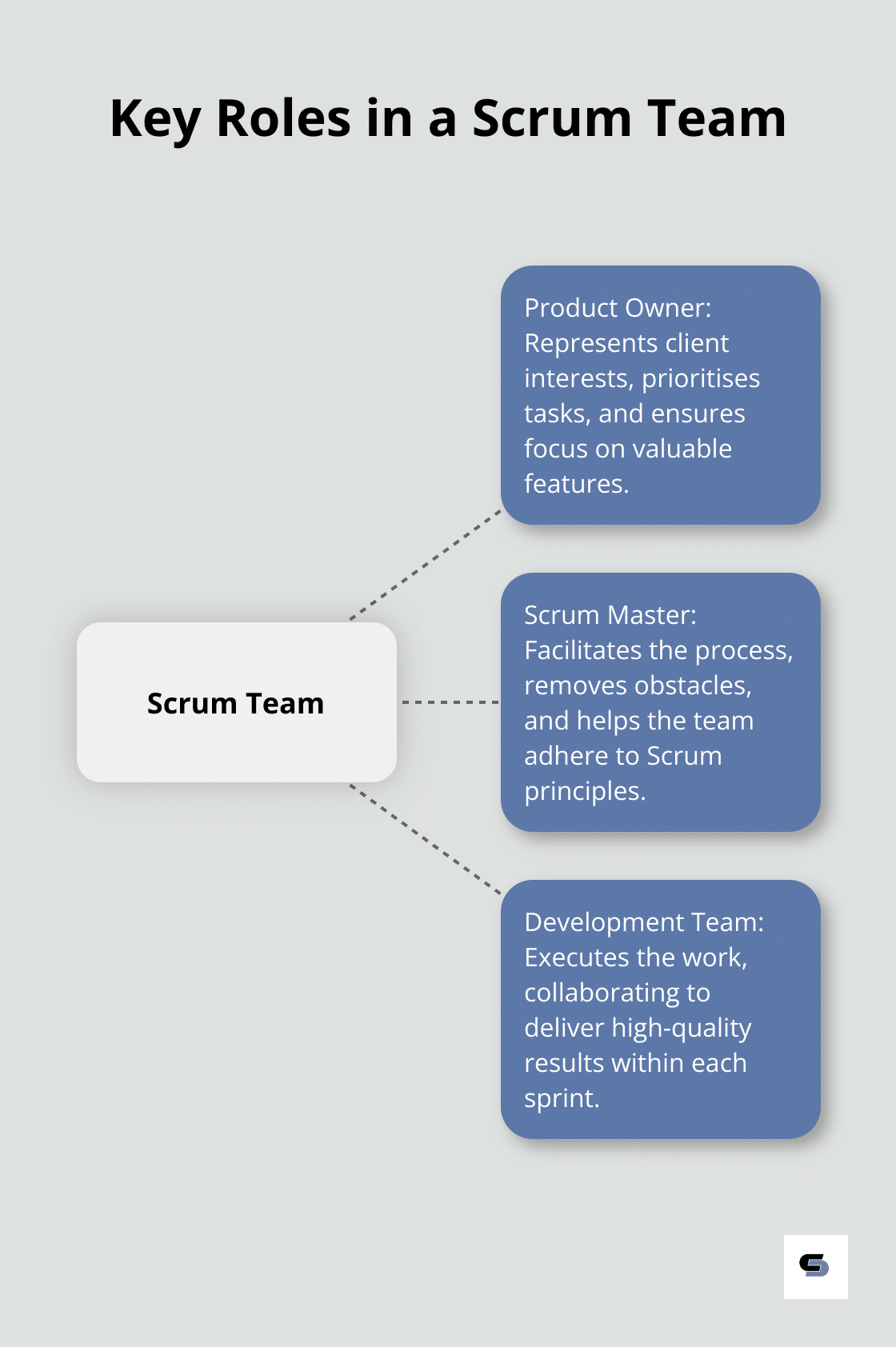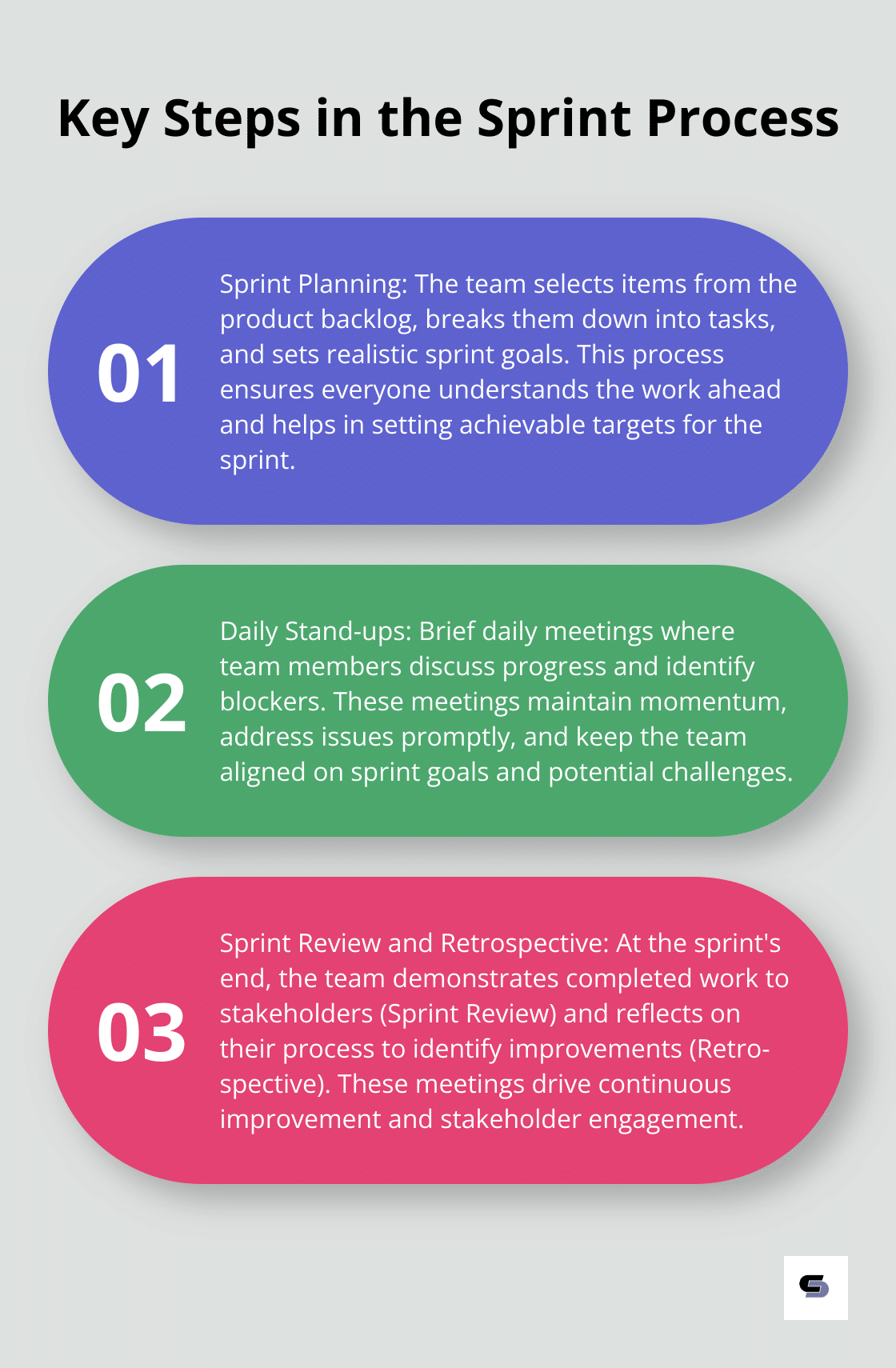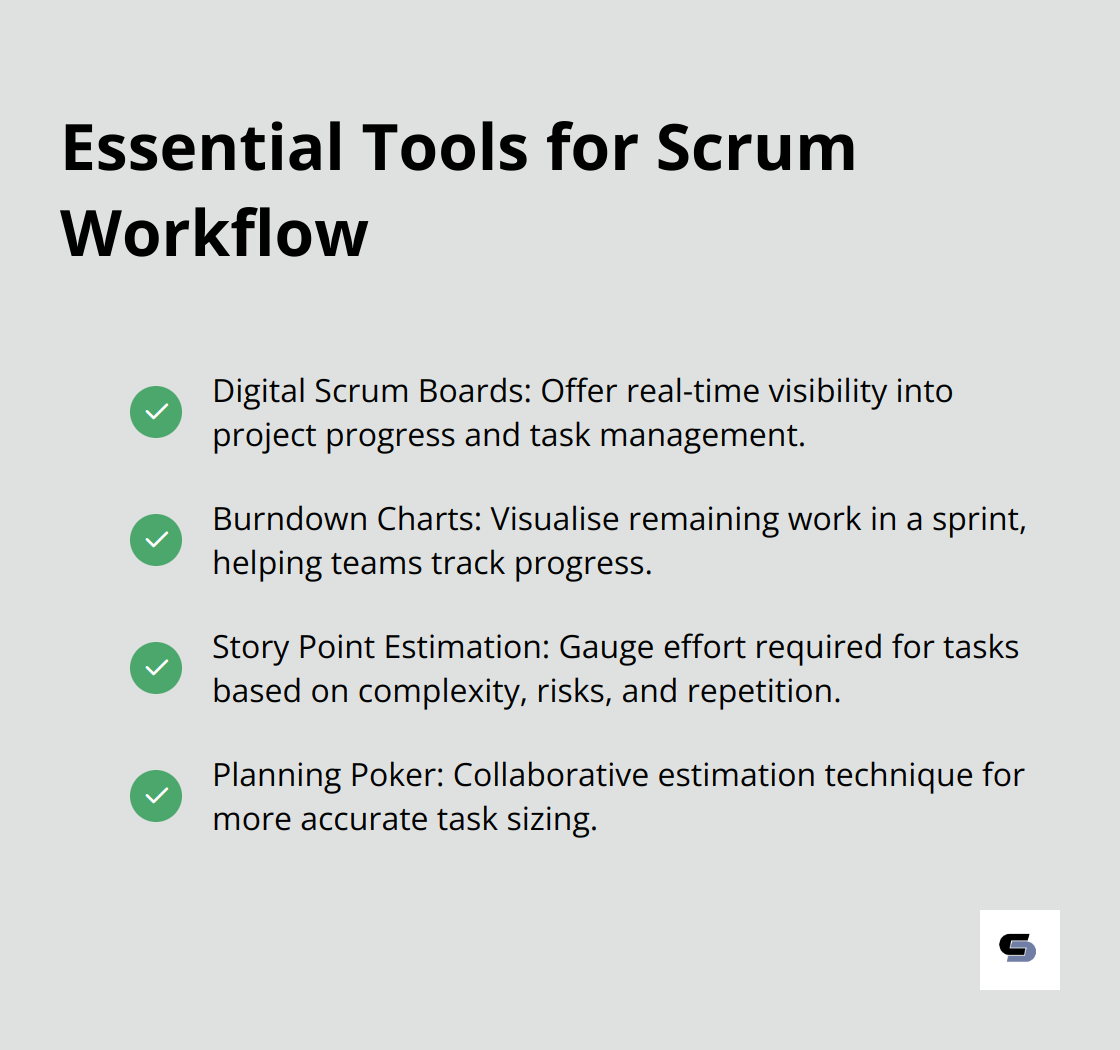How to Implement Agile Project Management with Scrum
At Cameron Construction, we’ve embraced Agile project management and Scrum to streamline our operations and deliver exceptional results.
Agile methodologies have revolutionised how teams work, and Scrum has emerged as a powerful framework within this approach.
In this post, we’ll guide you through the process of implementing Agile project management with Scrum, sharing insights from our own experiences and industry best practices.
What is Agile Project Management with Scrum?
The Essence of Agile Project Management
Agile project management revolutionises the traditional approach to project execution. It emphasises flexibility, continuous improvement, and client satisfaction. Instead of adhering to a rigid plan, Agile teams work in short cycles, constantly reassessing priorities and adjusting their approach based on feedback. This method proves particularly effective in industries where unexpected challenges often arise (such as construction or software development).
Core Principles of Scrum
Scrum applies Agile principles through a specific set of practices. The framework centres around short work cycles called sprints, typically lasting 1-4 weeks. During each sprint, the team focuses on completing a set of prioritised tasks from the project backlog.
One of Scrum’s key benefits is its emphasis on transparency. Daily stand-up meetings keep everyone informed about progress and obstacles. At the end of each sprint, the team demonstrates their work to stakeholders, gathering feedback that informs the next cycle.
Key Roles in a Scrum Team
Effective implementation of Scrum relies on three primary roles:

- Product Owner: This person represents the client’s interests, prioritises tasks, and ensures the team works on the most valuable features.
- Scrum Master: Acting as a facilitator, the Scrum Master removes obstacles and helps the team adhere to Scrum principles.
- Development Team: These professionals execute the work, collaborating to deliver high-quality results within each sprint.
Benefits of Agile Project Management with Scrum
Implementing Agile project management with Scrum offers numerous advantages:
- Increased flexibility and adaptability to changes
- Improved team collaboration and communication
- Faster delivery of valuable features to clients
- Enhanced transparency and stakeholder involvement
- Continuous improvement through regular feedback loops
Challenges and Considerations
While Agile with Scrum offers many benefits, it’s important to consider potential challenges:
- Resistance to change from team members or stakeholders
- The need for a cultural shift towards more collaborative and transparent work practices
- Potential difficulties in estimating long-term project timelines
- The requirement for dedicated and cross-functional team members
As we move forward, we’ll explore how to set up your Scrum process effectively, ensuring you can harness the full power of this Agile framework.
Setting Up Your Scrum Process
Creating a Robust Product Backlog
The product backlog forms the foundation of any Scrum project. It consists of a prioritised list of features, enhancements, and fixes that define the project scope. To create an effective backlog, conduct thorough stakeholder interviews and market research to identify key requirements. Write each item in the backlog as a user story, emphasising the value it brings to the end-user.
For instance, in a home renovation project, a user story might read: “As a homeowner, I want an open-plan kitchen-living area so I can interact with my family while cooking.” This approach keeps the client’s needs at the forefront of the project.
Planning and Executing Sprints
After establishing a well-defined backlog, move on to sprint planning. Many teams opt for two-week sprints. During sprint planning, the team selects items from the top of the product backlog that they believe they can complete in the sprint.
Break down each selected item into specific tasks and estimate the effort required. This process helps set realistic sprint goals and ensures everyone understands the work ahead.
Throughout the sprint, use a digital Scrum board to track progress. Each task moves from “To Do” to “In Progress” to “Done,” providing a visual representation of the workflow. This transparency allows quick identification and resolution of any bottlenecks.

The Power of Daily Stand-ups
Daily stand-ups maintain momentum and address issues promptly. These brief meetings occur at the same time each day. Team members discuss progress and identify blockers. The reason it’s called a “stand-up” is to keep the meeting short and focused.
Continuous Improvement Through Reviews and Retrospectives
At the end of each sprint, hold two important meetings: the sprint review and the sprint retrospective.
In the sprint review, demonstrate the work completed during the sprint to stakeholders. This meeting focuses on optimising and maximising product value. The feedback received helps shape the priorities for future sprints.
The sprint retrospective focuses on people, processes, and tools. The team discusses what went well, what could improve, and what actions they’ll take to enhance their performance in the next sprint. This commitment to continuous improvement drives success in Scrum projects.
With a solid Scrum process in place, teams can significantly improve project delivery times and client satisfaction rates. While it requires discipline and commitment, the benefits of this approach are clear: better communication, increased flexibility, and consistently high-quality results. To further enhance your Scrum implementation, let’s explore some effective tools and techniques in the next section.
Supercharging Your Scrum Workflow
Digital Scrum Boards: Your Project’s Command Centre
Digital Scrum boards transform task management. Tools like Jira offer real-time visibility into project progress. Following Agile principles, Jira is very easy to learn, teach and use. It is designed from scratch to be used for task management, allowing team members to move tasks across columns (such as “To Do,” “In Progress,” and “Done”), mirroring physical boards used in traditional Scrum setups.
The accessibility of digital boards stands out. Team members can update their progress from any location, which keeps everyone informed. These tools often integrate with other project management software, creating a seamless workflow.
Burndown Charts: Visualising Sprint Progress
Burndown charts serve as powerful visual tools that display remaining work in a sprint. They plot the ideal work reduction line against the actual work completed, which helps teams quickly identify if they’re on track or falling behind.
Many project management tools automatically generate burndown charts. A simple spreadsheet can also do the job. Daily updates provide a clear picture of sprint progress.
Story Point Estimation: Sizing Up Your Work
Story point estimation helps teams gauge the effort required for each task. Instead of time-based estimates, which can lack accuracy, story points consider complexity, risks, and repetition.
The Agile Fibonacci scale gives teams a more realistic way to approach estimates using story points. This non-linear scale prompts meaningful discussions about task size and complexity. Teams often disagree initially, but these discussions uncover hidden complexities or risks in tasks.
Planning Poker: A Collaborative Estimation Technique
Planning poker enhances the estimation process. Each team member privately selects a card representing their estimate. Significant discrepancies lead to discussions about the reasons behind different estimates. This process results in more accurate sizing and better sprint planning.
The goal isn’t perfect estimation, but to improve the team’s understanding of the work ahead and to make informed decisions about what they can accomplish in a sprint.
Integrating Tools for Maximum Efficiency
The combination of these tools and techniques creates a more efficient and transparent Scrum process. They provide the structure needed to keep projects on track while maintaining the flexibility that makes Agile so powerful.
Try to integrate these tools into your workflow gradually.

Start with a digital Scrum board, then introduce burndown charts and story point estimation. As your team becomes comfortable with these tools, you’ll notice improved communication, better sprint planning, and more accurate project timelines.
Final Thoughts
Agile project management and Scrum transform how organisations approach projects. These methodologies foster flexibility, collaboration, and continuous improvement. Organisations often experience faster delivery of valuable features, improved team communication, and increased stakeholder satisfaction.
Transitioning to Agile and Scrum presents challenges, particularly in organisations with traditional project management practices. Strong leadership, clear communication of benefits, and patience help team members adapt to new ways of working. Regular sprint retrospectives offer valuable opportunities for teams to reflect on their processes and identify areas for enhancement.
At Cameron Construction, we apply Agile project management and Scrum principles to our home renovation and extension projects. This approach allows us to deliver high-quality results that align with our clients’ visions, while maintaining flexibility throughout the construction process. We ensure our clients stay involved and informed at every stage of their home improvement journey.






